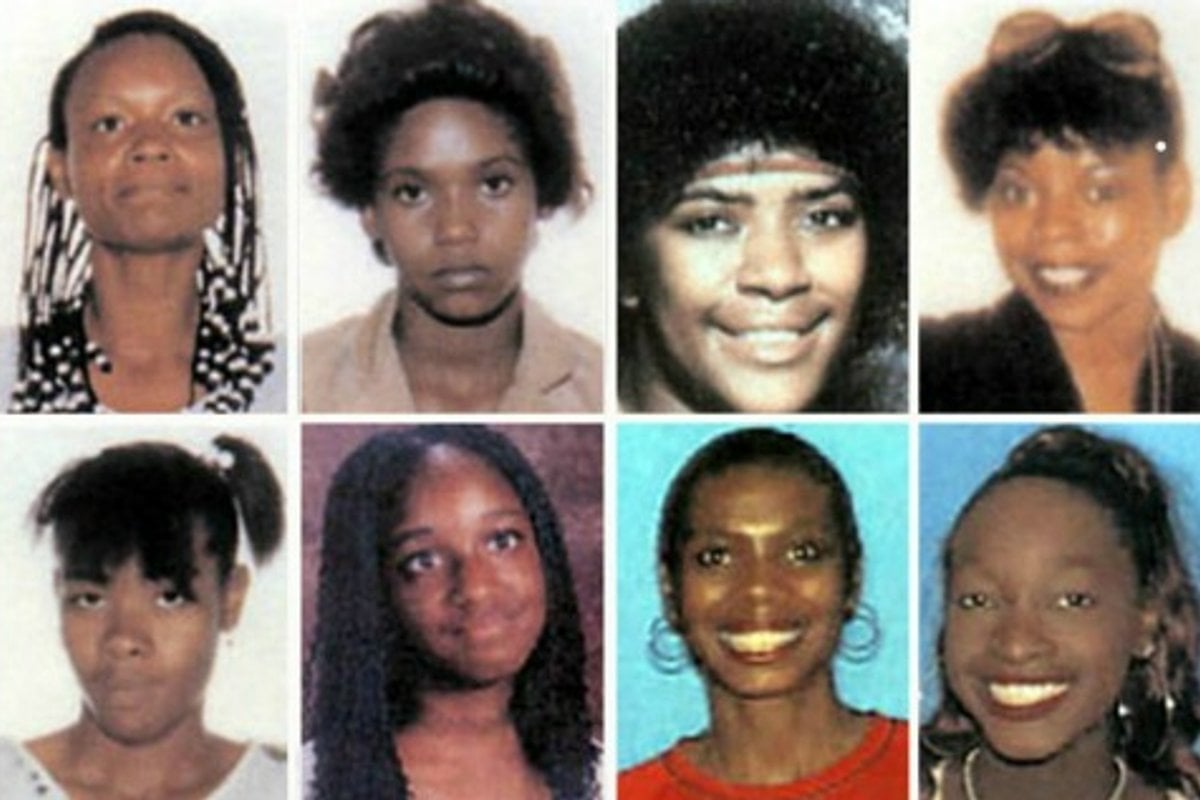
This post deals with rape and violence and might be triggering for some readers.
Janecia Peters’ four-year-old son had a Christmas present for his mum.
He’d wrapped it himself, in aluminium foil and red rope. But the little boy never got a chance to give his mum the present.
Janecia’s body, naked except for a gold heart pendant, was found in a skip bin by a homeless man looking for cans.
Watch the trailer for True Crime Conversations. Post continues below.
It was January 1, 2007, in Los Angeles. Janecia was the latest victim of a serial killer who’d been murdering young women in LA since 1985. But the police didn’t hold a press conference to announce that Janecia’s body had been found. They didn’t even let her family know that she was the victim of a serial killer.
The following year, Janecia’s mother Laverne spoke to investigative journalist Christine Pelisek at the LA Weekly, pointing out that police had gone “all the way to Aruba” to investigate the Natalee Holloway murder, but hadn’t even offered a reward for finding her daughter’s killer.

Top Comments